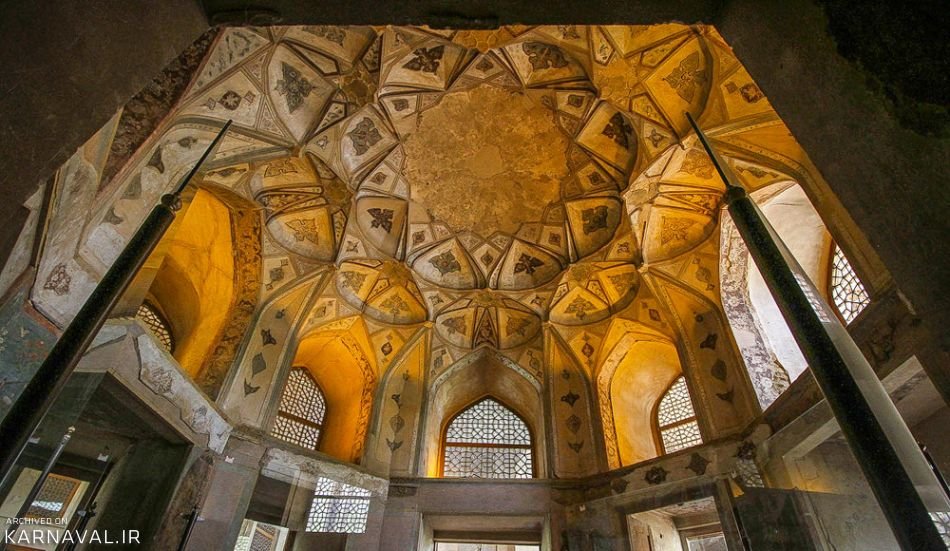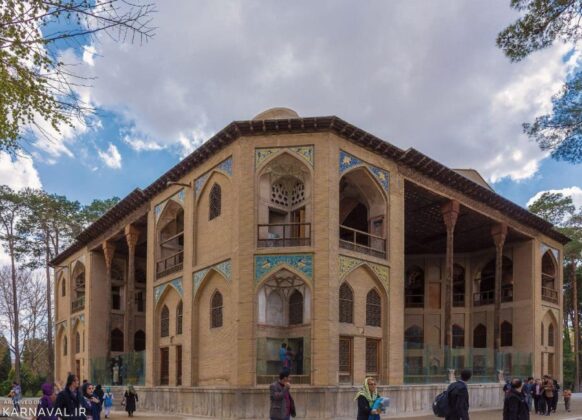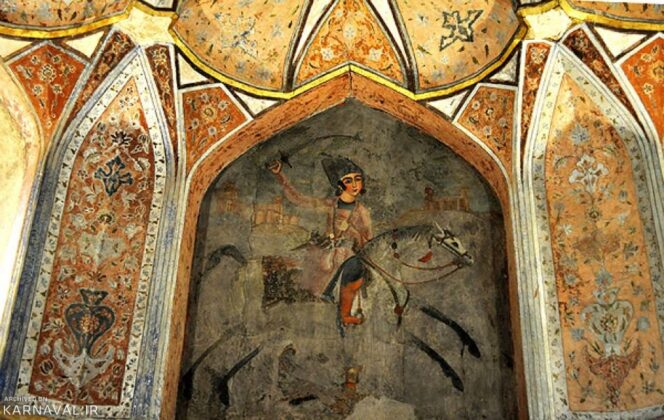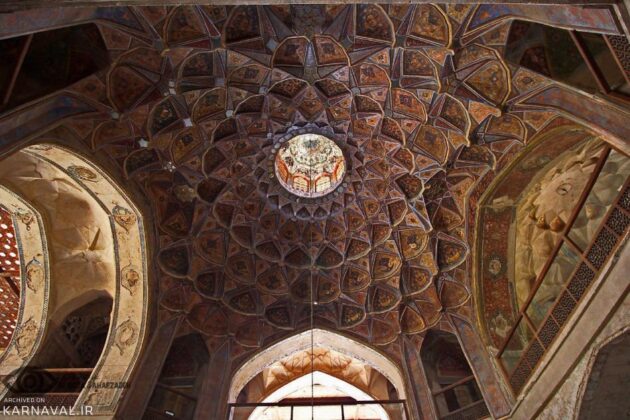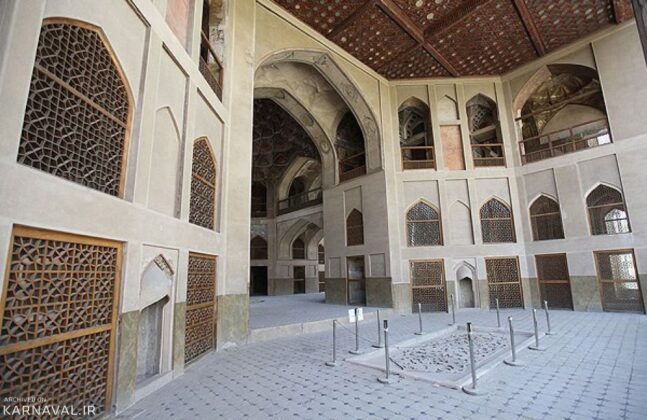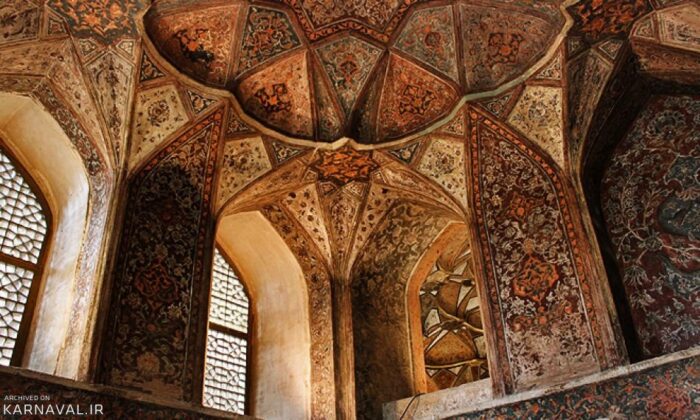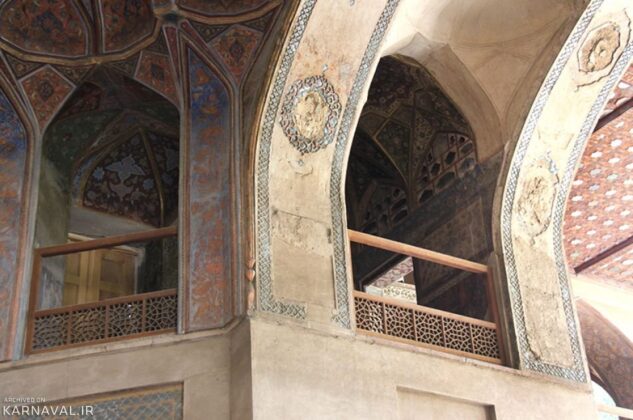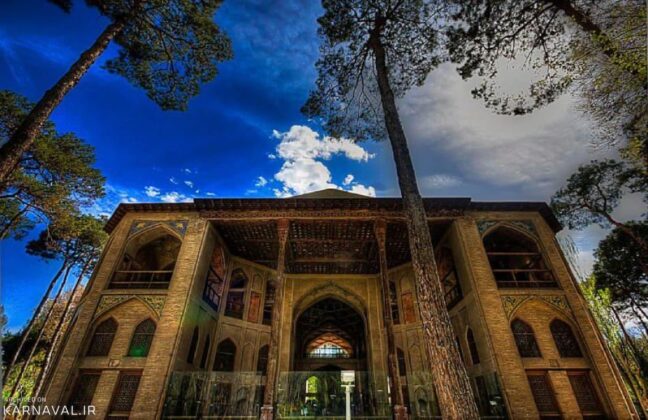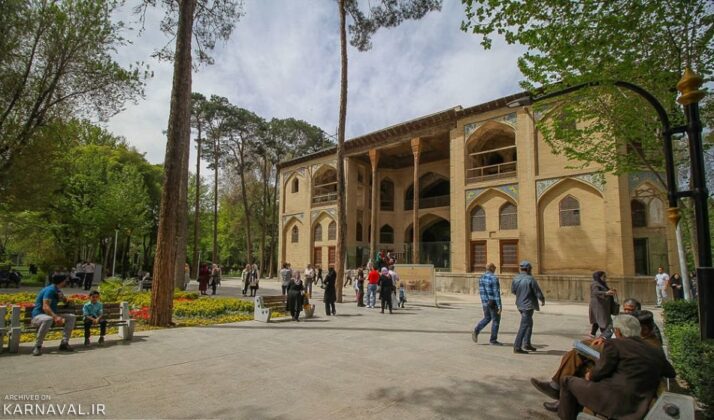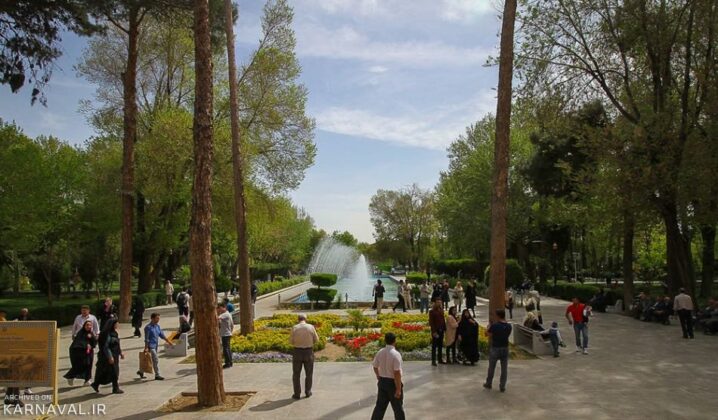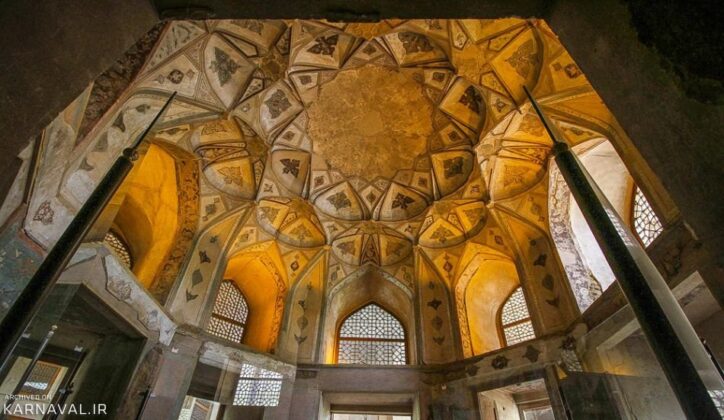Hasht Behesht (literally Eight Paradises) is the only remaining site among numerous palaces once existed in the Charbagh region of Isfahan in the Safavid dynasty. Experts estimate that the site was built under Suleiman of Persia in 1669.
Hasht Behesht is an octagonal building with many rooms and highly spectacular decorations. The main feature of the historical palace is that it is surrounded by several halls. The special connection made between various spaces of the site has turned its architecture into a unique one.
With its numerous sections and spaces, Hasht Behesht palace serves as a remarkable feat of architecture with eye-catching decorations.
The explorers who visited the building during Safavid dynasty described it as a “heaven on earth”; and cited it as the most beautiful palace in the world compared with its counterparts in Europe.
The building underwent excessive changes at the hands of the Qajar dynasty. That’s the reason why most explorers have wrongly described it as a contemporary structure.
If you visit the palace today, you can no longer see the wooden fence and frames as well as the colourful glasses that once characterized Hasht Behesht. The deep changes include large parts of the building’s exterior as well. But despite all this, the palace remains among the most breathtaking historical buildings in Iran.
Below, you can see a collection of photos of this beautiful palace taken from Karnaval.ir website:
